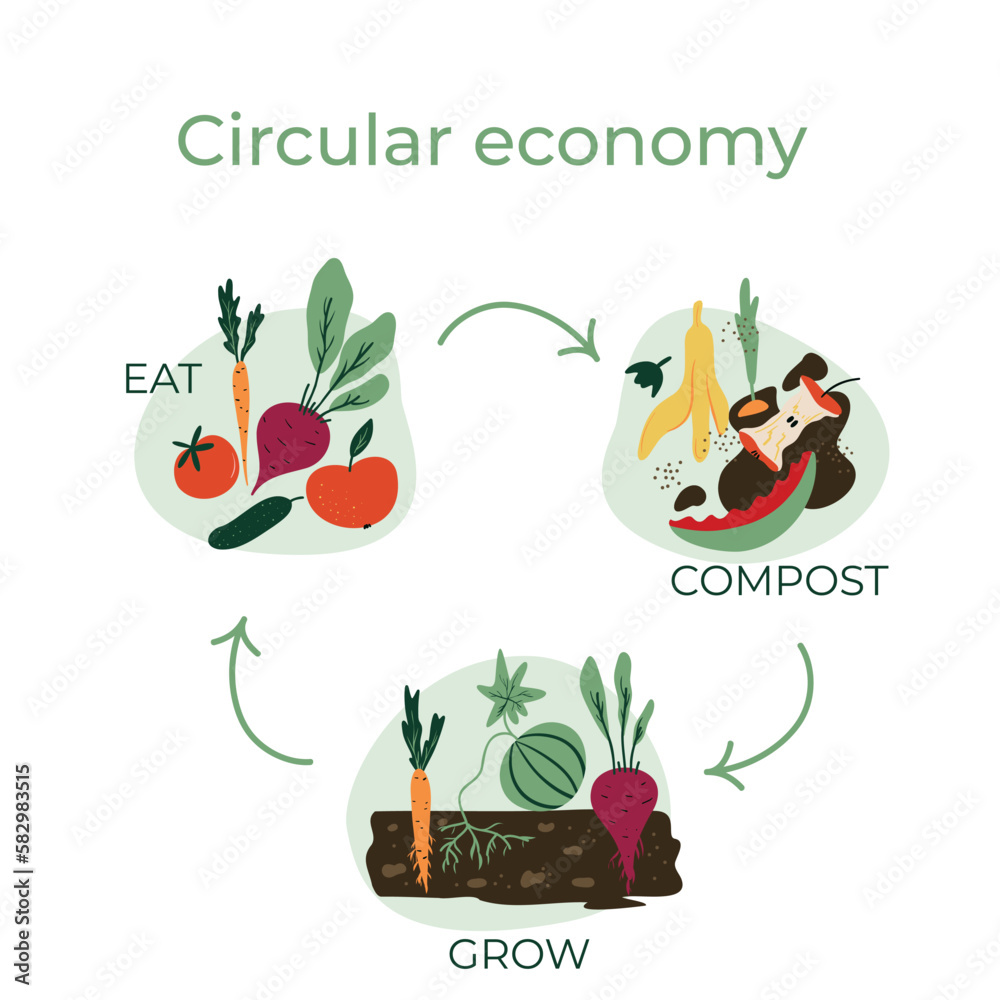Food waste is a pressing global issue with significant economic, environmental, and social implications. Each year, billions of tons of food are lost or wasted throughout the food supply chain, from production and distribution to consumption. Here, we’ll examine the concept of a circular economy in agriculture and explore strategies to reduce, recover, and recycle food waste.
1. Understanding the Scale of Food Waste:
Food waste occurs at every stage of the food supply chain, from farm to fork. In developed countries, much of the waste occurs at the consumer level, where food is discarded due to spoilage, overbuying, or cosmetic imperfections. In developing countries, food loss often occurs during production, storage, and transportation due to inadequate infrastructure and post-harvest handling practices.
2. Environmental and Economic Impacts:
Food waste contributes to greenhouse gas emissions, deforestation, and water scarcity, exacerbating environmental degradation and climate change. Economically, food waste represents a loss of valuable resources such as water, land, energy, and labor. Addressing food waste not only reduces environmental impacts but also generates economic savings and creates opportunities for innovation and job creation.
3. Strategies for Food Waste Reduction:
Various strategies can help prevent and reduce food waste at different stages of the supply chain. These include:
- Improving agricultural practices to minimize losses during production, harvest, and post-harvest handling.
- Enhancing storage and transportation infrastructure to reduce spoilage and food loss.
- Implementing better inventory management and logistics optimization in retail and distribution.
- Educating consumers about food waste reduction strategies such as meal planning, proper storage, and portion control.
- Redirecting surplus food to food banks, shelters, and charitable organizations through food recovery and donation programs.
4. Moving Towards a Circular Economy:
The concept of a circular economy in agriculture aims to eliminate waste and maximize the value of resources through recycling, reuse, and regeneration. Instead of following a linear model of production, consumption, and disposal, a circular economy emphasizes closing the loop by:
- Recycling organic waste through composting, anaerobic digestion, or bioenergy production to generate renewable energy, soil amendments, and fertilizers.
- Recovering and repurposing surplus food and by-products for animal feed, industrial applications, or alternative food products.
- Designing packaging and product systems that are reusable, recyclable, or compostable to minimize waste and promote resource efficiency.
5. Policy and Industry Initiatives:
Governments, businesses, and civil society organizations play crucial roles in addressing food waste through policy measures, industry initiatives, and consumer awareness campaigns. Policy interventions may include setting targets for food waste reduction, implementing regulations to standardize date labeling and food donation practices, and providing incentives for innovation and investment in waste reduction technologies.
In conclusion, addressing food waste is essential for achieving sustainability and resilience in the food system. By embracing the principles of a circular economy and implementing strategies to reduce, recover, and recycle food waste, we can create a more efficient, equitable, and sustainable food system for future generations.
Stay tuned for our next exploration into another critical topic shaping the future of agriculture and sustainable food systems.
